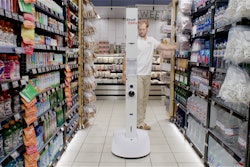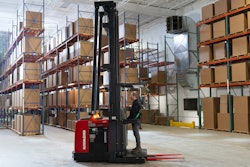
Supply chain transparency has never been more sophisticated. Retailers can track carbon footprints, monitor supplier sustainability metrics, and predict delivery times with remarkable precision. Yet despite these upstream advances, the sustainability challenges that matter most to customers and bottom lines persist: empty shelves, excessive food waste, and pricing that fails to balance environmental responsibility with profitability. Whether retailers are addressing sustainability to meet ESG mandates and stakeholder expectations or because they recognize the substantial financial benefits of operational efficiency, both face the same challenge: translating environmental intentions into profitable results.
While we’ve made great strides with supply chain intelligence, there is a notable gap when it comes to store execution. The industry needs to double down on data investments that prevent the waste, stockouts, and margin erosion happening daily where customers actually shop.
The store-level sustainability crisis
The numbers tell a sobering story about where sustainability efforts really succeed or fail. Inventory accuracy hovers at just 50-60%, meaning up to half of what systems think is available actually isn't. When products become unavailable or spoil on shelves, retailers lose up to 8% of revenue while negating every environmental investment made upstream. Inventory precision is critical to both availability and waste prevention. Too much inventory creates waste and margin erosion, while too little leads to stockouts and lost sales. Both scenarios undermine the sustainability and financial goals that accurate inventory management is designed to support.
This isn't just operational inefficiency but environmental failure at scale. Every product that spoils due to poor markdown timing or inadequate inventory management represents wasted water, energy, and carbon from production to transportation. A shipment's carefully tracked carbon footprint becomes meaningless if execution failures prevent products from reaching customers.
The impact of loyalty compounds the problem. Data suggests 30% of U.S. consumers would question their retailer relationship if stockouts became routine, while growing environmental consciousness means customers increasingly expect retailers to demonstrate genuine sustainability through action, not just reporting. Beyond loyalty, customer perception of sustainability practices directly impacts brand reputation and purchasing decisions, making environmental stewardship a competitive differentiator.
Why supply chain intelligence isn't enough
Traditional supply chain intelligence tools provide valuable upstream visibility and remain essential for understanding the flow of goods, but they often stop short of driving the store-level actions that determine sustainability outcomes. A retailer might know that temperature variations during transport could reduce shelf life, but without automated systems to immediately adjust pricing, inventory allocation, and markdown timing, that intelligence doesn't prevent waste. The key is ensuring retailers who are already investing in upstream visibility to also focus on downstream execution, where insights translate into action and rubber meets the road.
This execution gap explains why retailers can simultaneously invest millions in supply chain transparency while struggling to meet sustainability targets. Insight for insight's sake doesn't drive action. Intelligence without immediate guidance just translates to dashboards without ROI.
Leading retailers are discovering that meaningful sustainability gains come from linking supply chain transparency directly to store-level actions. For example, stores that leverage AI-powered markdown pricing technology see improved sell-through rates by 5%. It isn't because of some magic practice… it's that they're connecting data to immediate pricing actions at the shelf level.
The financial impact of reducing waste is transformative, turning what was once pure cost into recovered revenue and protected margins. Real-time adjustments improve sell-through rates while maintaining profitability, making waste reduction self-funding so sustainability initiatives support margins rather than erode them. Retailers that integrate visibility with timely store execution capture both environmental credibility and competitive advantage, as stores that consistently have products available at fair prices build customer trust that translates into repeat business and advocacy.
The execution imperative
Waste will continue to be an issue that plagues consumers and corporations, but at what cost? Recycle Track Systems estimates about 30% of food in American grocery stores is thrown away, generating about 16 billion pounds of food waste every year.
The future of retail sustainability lies in bridging the gap between supply chain intelligence and store-level execution. Whether retailers are driven by ESG commitments, cost reduction imperatives, or customer expectations, success depends on connecting upstream data to downstream execution.
Supply chain transparency provides the foundation, but insight-to-action capabilities are what actually move the needle on both sustainability and profitability. At the end of the day, customers don't shop in distribution centers; they shop on shelves, where the final sustainability battle is won or lost.



















